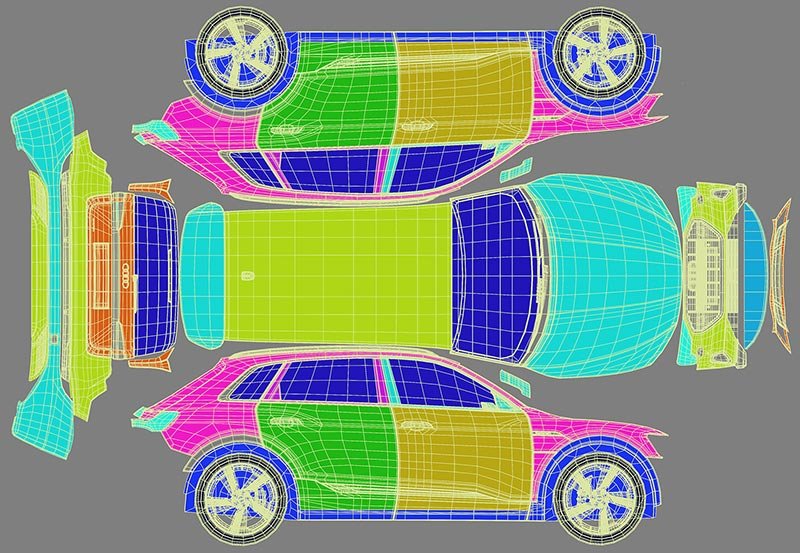UV Mapping Explained
Understanding UV Maps
UV Mapping is a critical technique in the realm of 3D modeling, serving as the bridge between 2D textures and 3D objects. This process involves laying out a 3D model's surface in a two-dimensional space, enabling textures to wrap around the model accurately. By mastering UV mapping, artists and developers can elevate the visual fidelity of games, web applications, and virtual environments, making digital creations come alive with detailed and realistic textures.
UV Map Example from Vehicle Scan of Audi E-Tron S
Exploring the Different Types of UV Maps
UV mapping caters to various model complexities through diverse techniques:
Planar Mapping: Ideal for flat surfaces, projecting textures directly onto a model's face.
Cylindrical and Spherical Mapping: Best suited for objects with circular geometries, wrapping textures around as if enveloping a cylinder or sphere.
Box Mapping: Applies textures on box-like geometries, ensuring each face receives a portion of the texture.
Manual Unwrapping: Offers the highest control, allowing artists to meticulously lay out each face of a complex model in the 2D UV space.
Projected UVs onto 3D Scan of Building Facade for Projection Mapping
Planar Projection of UVs onto Build Facade Scan
The Role of UV Mapping in Industry Tools
UV mapping's versatility is evident in its integration into leading 3D modeling software like Autodesk Maya, Blender, and 3ds Max. Each tool presents unique features tailored to streamline the UV mapping process, from automatic unwrapping to intricate manual adjustments, empowering artists to achieve precise texture alignment and optimization.
Retopologized Mesh with UVs of Car Interior
Textures applied to 3D mesh in Blender according to UV map
Summary
UV Mapping is more than just a technical necessity; it's an art form that brings 3D models to life. By understanding and applying various UV mapping techniques, artists and developers can push the boundaries of what's possible in digital visualization, creating immersive, realistic, and visually stunning experiences.
Frequently Asked Questions
-
UV Mapping is the process of translating a 3D model's surface into a 2D plane to accurately apply textures. This technique ensures that textures adhere correctly to the model, reflecting realistic details and colors.
-
UDIMs extend the UV mapping system, allowing for multiple high-resolution textures across a single model. This method enhances texture detail without overwhelming a single texture file, crucial for detailed models in high-end visual productions.
-
Efficient UV mapping optimizes texture usage, reducing file sizes and memory requirements. This not only improves rendering speeds but also ensures high-quality visuals in performance-sensitive environments like games and interactive web apps.





